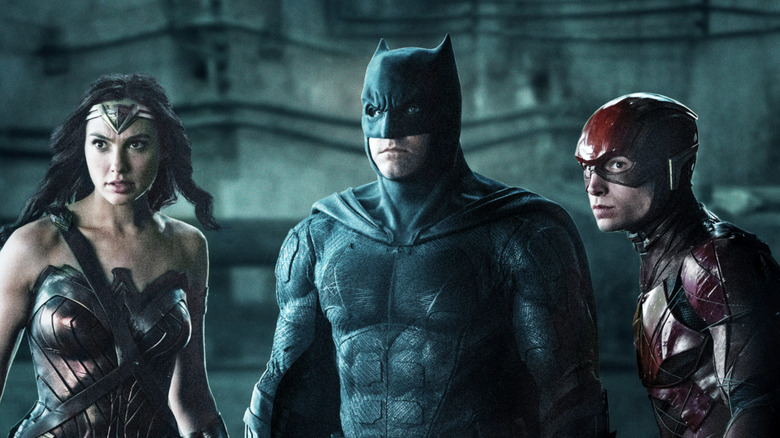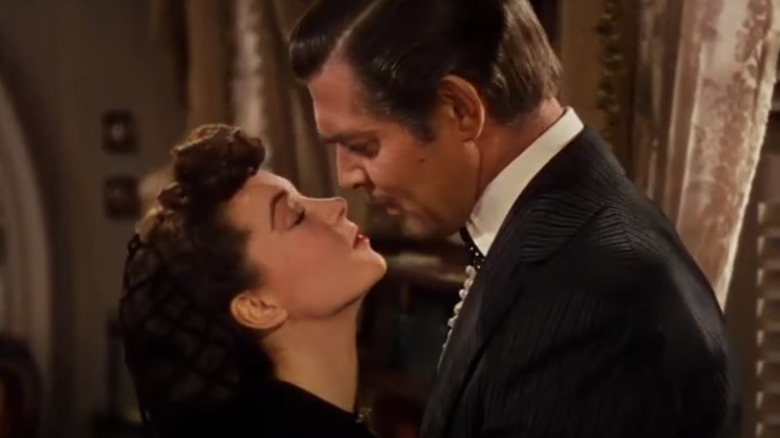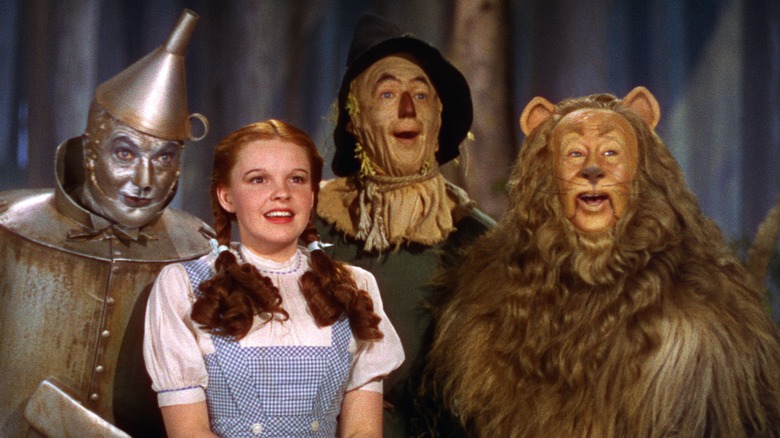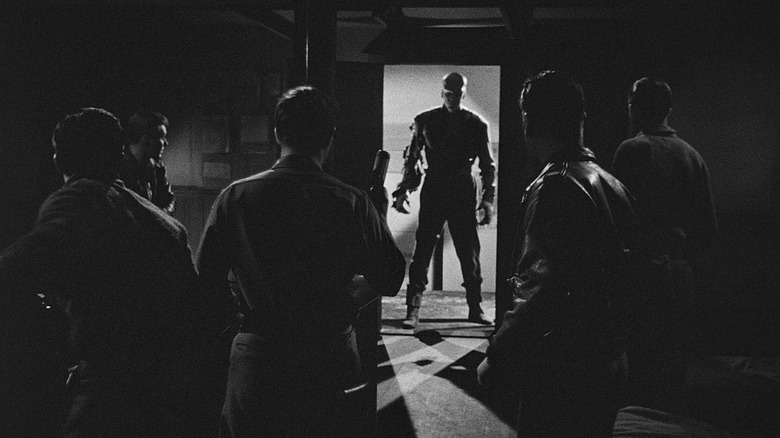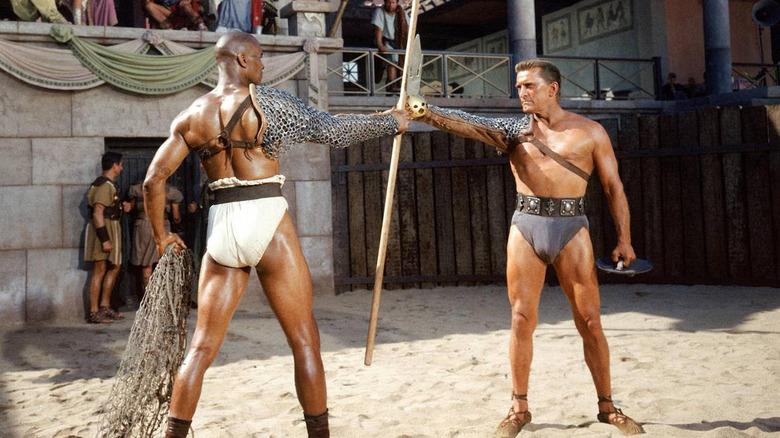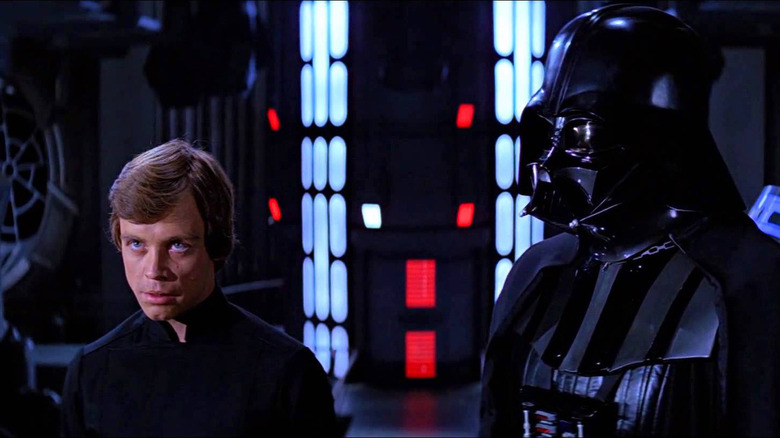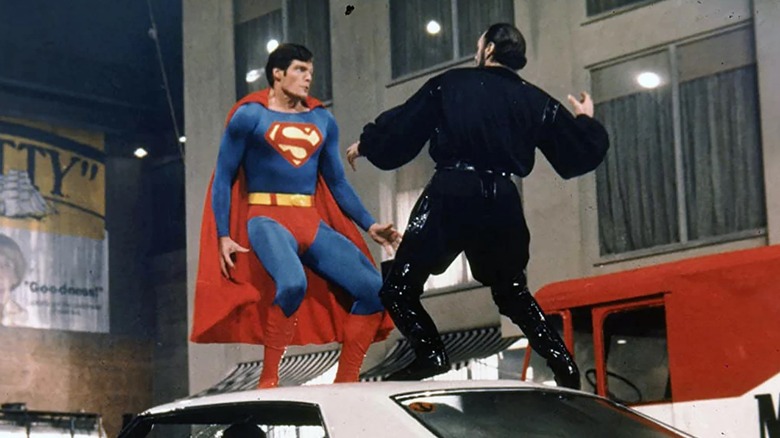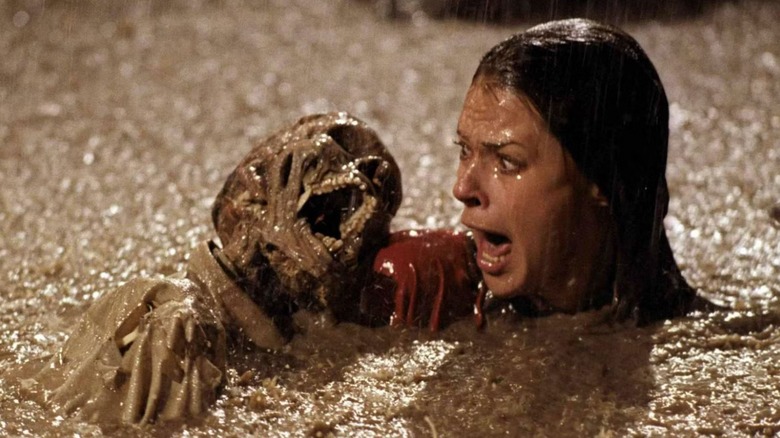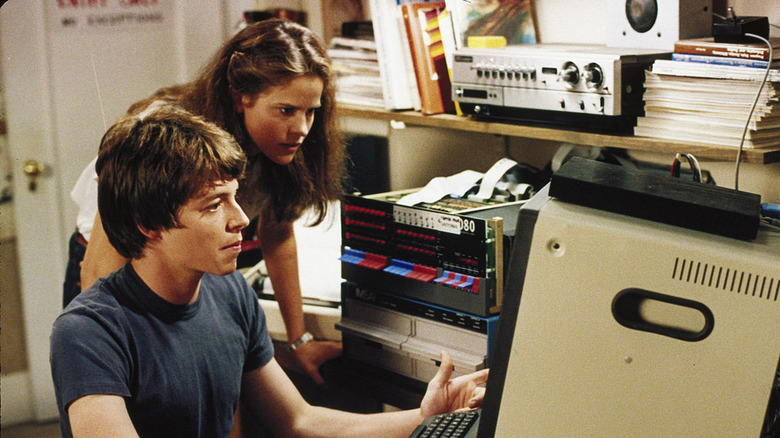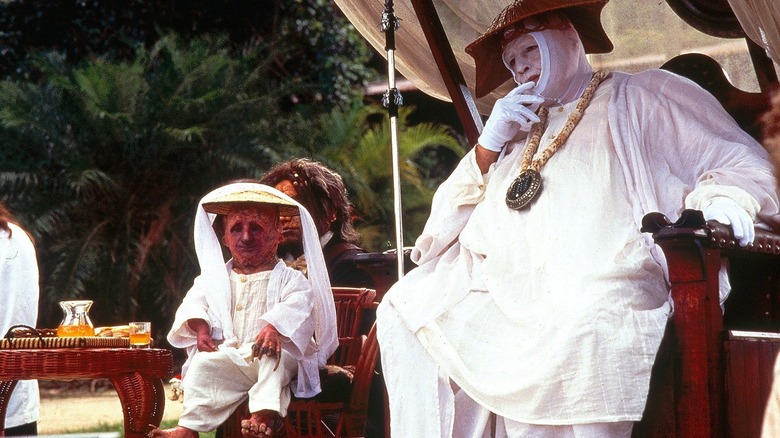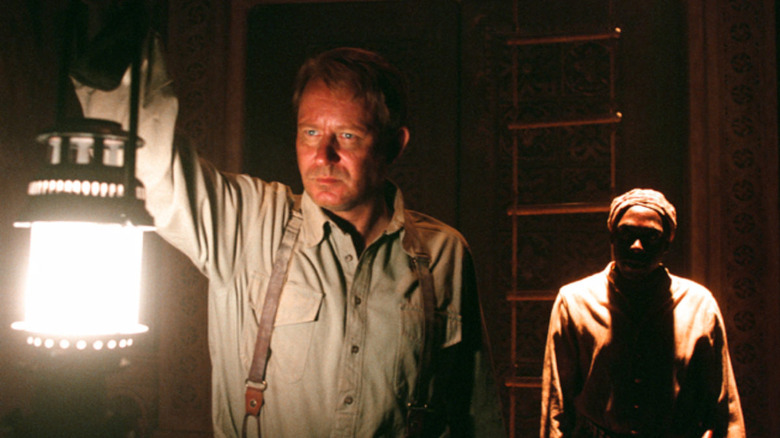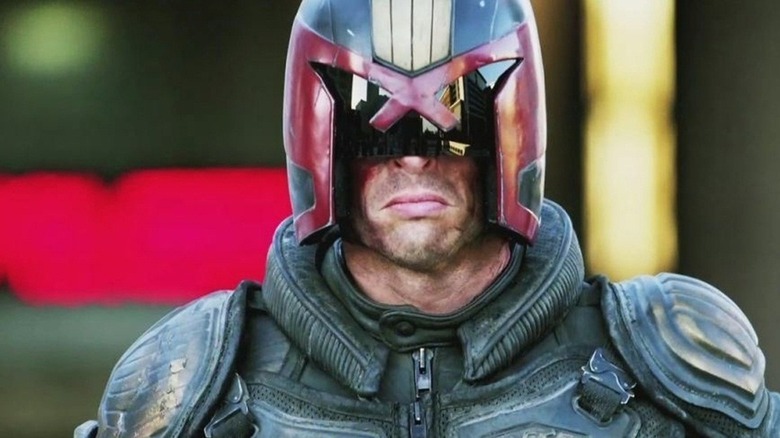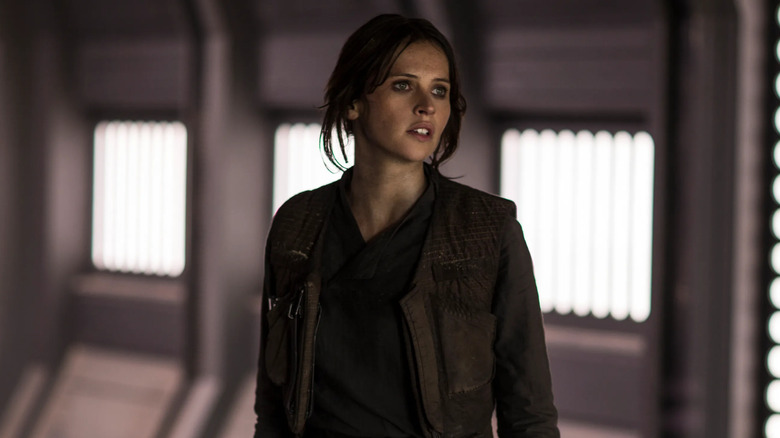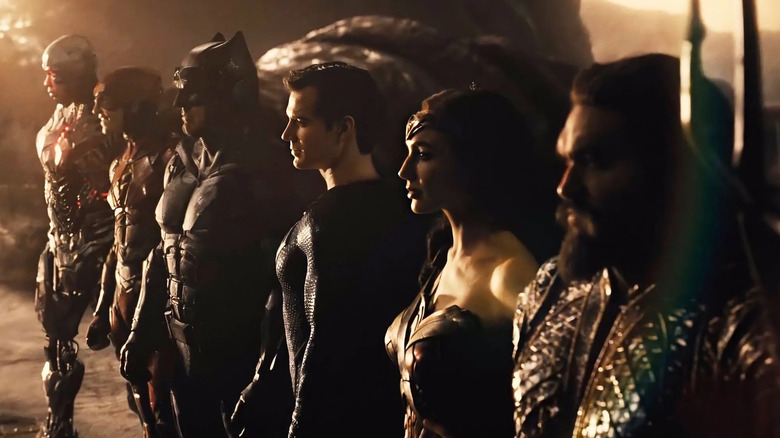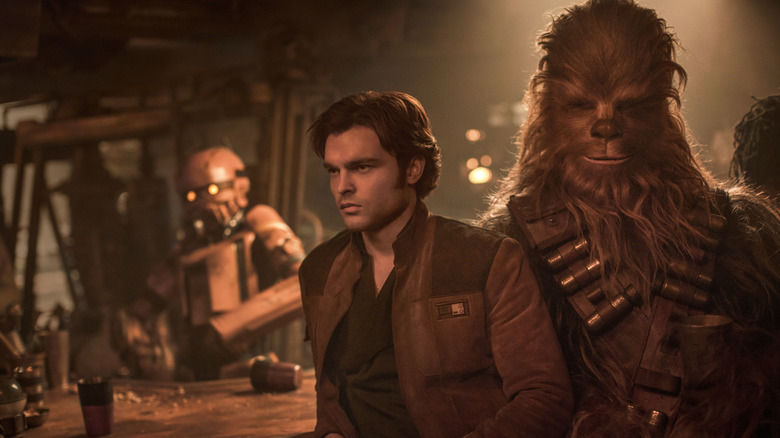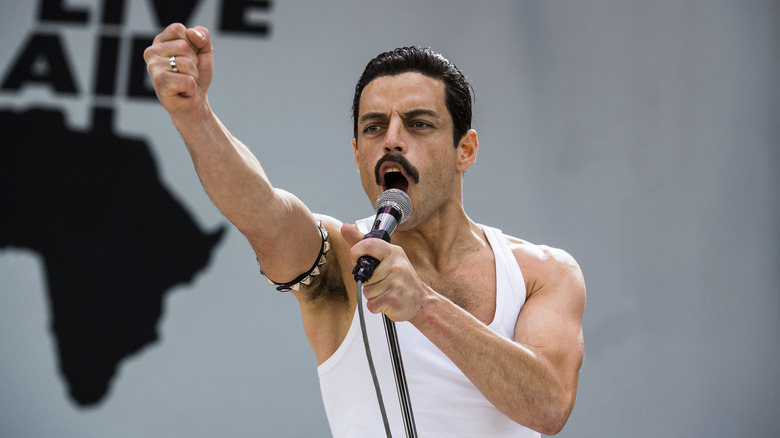The Real Reason These Movies Were Finished By Another Director
Films by their nature are a collaborative effort involving the skills of anywhere from a handful of people to hundreds of people, each proficient in a different craft or area of technical expertise necessary to get the picture done. But atop all of it is the director, who commands this army (or squad) of artisans and provides the vision and roadmap needed to bring the movie into focus — no pun intended.
Sometimes, however, the person leading the mission — whether they be a visionary or a journeyman — can end up being the wrong commander for the task at hand, or at least not someone that the producers or backers of the project feel is capable of landing the plane. In these cases, a replacement is sought, sometimes resulting in a classic film and other times in a project that deteriorates into shambles.
In many of the examples below, everyone ostensibly started out with the best of intentions, but the director was deemed unsuitable for the material or unable to work with the others involved and did not see the final version of the film through. In a few instances, the official director allegedly stayed in place while others shaped the film behind the scenes. Either way, the films on this list demonstrate that with so much money on the line, no one is irreplaceable — not even the director.
Gone with the Wind
This 1939 milestone is problematic for its outdated and insensitive portrayals of Black people, slavery, and the Antebellum South, but it was a troubled motion picture even before it completed production. The film began principal photography with director George Cukor behind the camera, but he was fired after just about three weeks by producer David O. Selznick. Cukor had been intimately involved in casting and pre-production, but he and Selznick reportedly clashed over the pace of shooting and the direction that Cukor wanted to steer the film in. There were also rumors that he and star Clark Gable had issues working together.
Some of Cukor's work remained in the picture (roughly a half-hour's worth), but Selznick tapped Victor Fleming to shoot the bulk of the film — which meant that Fleming would not be able to finish the other movie he was working on, "The Wizard of Oz." But even Fleming didn't see the entire project through, taking two to three weeks off due to exhaustion while a third director, Sam Wood, continued to shoot the movie. In the end, most of "Gone with the Wind" belongs to Fleming, but he didn't bring it in alone.
The Wizard of Oz
As noted above, director Victor Fleming had to quit "The Wizard of Oz" and take over "Gone with the Wind" at the behest of producer David O. Selznick and the studio, Metro-Goldwyn-Mayer, which was behind both films. But Fleming himself was not even the first director assigned to bring L. Frank Baum's fantasy classic about Dorothy's adventures in the Land of Oz to life. That task initially fell to veteran MGM director Richard Thorpe, who was let go after two weeks.
Producer Mervyn LeRoy allegedly did not like the footage he got from Thorpe, so director George Cukor temporarily took over — although Cukor did not shoot anything and was merely involved in reorganizing and redesigning aspects of the production before he left to begin work on "Gone with the Wind." Enter Victor Fleming, who shot most of the movie between late fall of 1938 and the early months of 1939, including all the scenes rendered in Technicolor. It was at that point that MGM asked Fleming to take over "Gone with the Wind" after Cukor had been let go.
King Vidor, a journeyman director with dozens of credits to his name, completed "The Wizard of Oz." He shot all the black-and-white scenes set in Kansas, including Dorothy's (Judy Garland) for-the-ages performance of "Over the Rainbow."
The Thing from Another World
This 1951 sci-fi classic was the first film adapted from John W. Campbell Jr.'s 1938 novella, "Who Goes There?" which also inspired the far more faithful 1982 version, "The Thing" by John Carpenter. "The Thing from Another World" was produced and co-written by Howard Hawks, the unsentimental, slyly subversive director of films like "Scarface" (1932), "The Big Sleep," "Bringing Up Baby," "Rio Bravo," and many more. Although the credited director on "The Thing" was Christian Nyby, a film editor and director who edited four of Hawks' films, it has long been speculated that Hawks, who was on the set frequently, was secretly calling the shots.
Star Kenneth Tobey claimed that Hawks shot all but one scene, while other cast members indicated that Nyby would physically stage the action but constantly consult with Hawks. Nyby himself told Cinefantastique in 1982 (via The Los Angeles Times) that he directed the film but consciously did so in Hawks' style: "This is a man I studied and wanted to be like," he said. "You would certainly emulate and copy the master you're sitting under, which I did." Hawks also denied directing the picture — but notably, he kept nearly 90% of the $50,000 directing fee for himself, giving just over $5,000 to Nyby.
Spartacus
This 1960 historical epic starring Kirk Douglas (whose production company was also behind the film) as the title slave who becomes a gladiator for the entertainment of his corrupt Roman masters and ultimately leads an uprising against them. Co-star Laurence Olivier was originally slated to direct before the job was offered to David Lean of "Lawrence of Arabia" fame. After he passed on it, director Anthony Mann ("Winchester '73") was handed the gig.
But Mann was fired by Douglas after just one week of shooting, allegedly because the project was simply too massive for him to handle. Douglas turned to Stanley Kubrick, a young director he had worked with recently on the war film "Paths of Glory." Kubrick came aboard and quickly took control of the picture and added his distinct visual style to the film. But even though Kubrick successfully completed "Spartacus," he fought with Douglas and members of the crew and later disowned it as the one film in his career on which he did not have complete creative freedom.
Star Wars: Episode VI — Return of the Jedi
Exhausted after making "Star Wars" (aka "Episode IV – A New Hope"), George Lucas did not wish to direct the sequels. He initially wanted his pal Steven Spielberg to helm "Episode VI – Return of the Jedi," but when Spielberg proved unavailable, Lucas also considered directors like David Lynch and David Cronenberg before settling on Richard Marquand.
Marquand (who passed away at age 49 in 1987) was a relatively unknown British film and TV director when he landed the "Return of the Jedi" gig. Rumors have persisted that Lucas — who had more or less left his mentor, Irvin Kershner, alone to shoot "The Empire Strikes Back" — was much more of a presence on the "Return" set, even directing some second-unit material and helping Marquand with the visual effects, which the director had not had much previous experience with.
"This film was even more complicated than the last one, so I had to be there every day on the set working very closely with Richard," said Lucas in Paul Duncan's book, "The Star Wars Archives: 1977-1983." By all accounts, Richard Marquand did direct "Return of the Jedi" but had George Lucas looking over his shoulder the whole time — a phantom menace, if you will.
Superman II
Back in 1977, producers Alexander and Ilya Salkind decided to shoot their live-action, big-screen version of "Superman" at the same time as "Superman II," much as they had done with their earlier hits, "The Three Musketeers" and "The Four Musketeers: Milady's Revenge." But they didn't count on the incredibly difficult production challenges that director Richard Donner and his cast and crew would face. With tensions between the producers and Donner rising, and "Superman" falling behind schedule and going over budget, it was decided to complete the first film for its December 1978 release date and return to the follow-up later.
When shooting resumed on "Superman II" in September 1979, however, Richard Donner was no longer behind the camera. His replacement was "Musketeers" director Richard Lester, who said that legal issues between Donner and the Salkinds led to Donner's departure. Yet Donner stated in interviews that he wanted full creative control and would not work with the Salkinds' line producer, Pierre Spengler, again if he were to return — so the Salkinds fired him. Although Donner had completed around 75% of "Superman II" and some of his footage remained, Lester reshot and added several sequences.
"Superman II" was a success with both critics and audiences, but years later, armed with some rough test footage, other scenes that had been completed but excised, and footage of Marlon Brando as Jor-El that the actor had previously blocked the Salkinds from using, editor Michael Thau completed "The Richard Donner Cut" for home video release. So, in a way, Donner got to finish the movie after all.
Poltergeist
It's one of the biggest riddles in horror cinema history: Who directed 1982's "Poltergeist"? Produced and co-written by Steven Spielberg and officially directed by Tobe Hooper, the movie tells the frightening story of the Freeling family who are terrorized by malevolent entities in their suburban California home. Speculation persists to this day that Spielberg — who was preparing to direct "E.T.: The Extra-Terrestrial" at the time and contractually barred from working on another film simultaneously — secretly helmed "Poltergeist" with Hooper as his frontman.
With its focus on an archetypal American family, suburban setting, and intense but mainstream scares, "Poltergeist" certainly feels and plays more like a Spielberg film than the work of the man who gave us the macabre, unrelentingly morbid "The Texas Chain Saw Massacre" and "Eaten Alive." Spielberg was a nearly constant presence on the set of "Poltergeist," even shooting some of the visual effects sequences. He even admitted to making a lot of decisions that might have normally fallen to Hooper, but later downplayed the remarks. Hooper himself shot down the idea as well in 2000. Did Steven Spielberg truly ghost-direct "Poltergeist"? That question may haunt the film forever.
WarGames
In 1983's "WarGames," a teenage nerd named David Lightman (Matthew Broderick) hacks into an online computer system thinking he's playing a yet-to-be-released war strategy game. What he soon realizes, however, is that he's broken into a U.S. military computer that cannot tell the difference between what's real and what's simulation, and the launch of actual nuclear weapons hangs in the balance.
Eerily ahead of its time in some ways, "WarGames" began filming under the direction of Martin Brest, who was a few years away from scoring major hits with "Beverly Hills Cop" and "Midnight Run." But Brest was fired after more than a year of preparation and less than three weeks into shooting. He was replaced by John Badham, director of "Saturday Night Fever" and "Blue Thunder." Badham claimed that Brest's initial footage pointed toward a darker version of the story and that his mandate was to lighten it up; Brest later said that he clashed with an executive producer on the movie, which led to his dismissal.
Badham continued to direct movies until 1997, when he switched to working in television for the next 20 years, while Brest withdrew from the industry entirely after helming 2003's notorious "Gigli," starring Ben Affleck and Jennifer Lopez. That film impacted Brest's career pretty much like ... a nuclear missile.
The Island of Dr. Moreau
The 1996 film "The Island of Dr. Moreau" was one of those projects that went so disastrously wrong that it got an entire documentary – "Lost Soul: The Doomed Journey of Richard Stanley's Island of Dr. Moreau" — made about it. Troubled from the start, this version of the classic H.G. Wells novel was beset with bad weather, budget issues, and cast problems: Some stars dropped out or quit (Bruce Willis and Rob Morrow) while those who stayed behaved erratically (Marlon Brando and Val Kilmer). The project reached peak crisis when director and co-writer Richard Stanley was fired just a few days into filming after missing studio meetings and being unable to control Kilmer and his demands, which included a reduction in his schedule and his refusal to say the lines in the script.
Stanley's replacement was John Frankenheimer, whose best days as a director ("The Manchurian Candidate," "Black Sunday") were largely behind him. But even the veteran Frankenheimer couldn't corral Brando, Kilmer, or the weather, and the finished film ended up being a bizarre, expensive flop. Stanley, meanwhile, vanished into the rainforest after getting canned but snuck back onto the set and appeared in costume as one of the movie's animal-human hybrids. He's since been accused of abuse by three women (allegations he's denied), making "Dr. Moreau" perhaps the least of his unfortunate legacies.
Exorcist: The Beginning, and Dominion: Prequel to the Exorcist
This is one of only two examples on this list that resulted in each director completing their own versions of the film, with both eventually released to the public. Morgan Creek Productions — which owned the film rights to "The Exorcist" — recruited Paul Schrader ("American Gigolo," "First Reformed") to direct a prequel to the horror classic following the failing health of original director John Frankenheimer. But when producer James G. Robinson viewed the finished project, he was disappointed to watch a cerebral film with little or no scares, gore, or action.
Schrader re-edited the film, but Robinson still wasn't pleased and brought in his own editor, only for Schrader to dismiss the latter and do another edit himself. When that cut failed to impress Robinson, the studio fired him rather than let him reshoot the film and began meeting with other directors. Based on a pitch by "Cliffhanger" director Renny Harlin, an almost entirely new movie was created, with only star Stellan Skarsgård remaining from the first version as a new plot and cast was fashioned around him.
Harlin's "Exorcist: The Beginning" was released in August 2004 to brutal reviews. Shortly thereafter, Morgan Creek approached Schrader about completing his version of the film and provided him with a very small budget to work with. Titled "Dominion: Prequel to the Exorcist," Schrader's film was given a limited release in March 2005. It performed somewhat better with critics than the Harlin version — and is considered the better of two seriously flawed approaches to the same material.
Dredd
What happened behind the scenes on 2012's "Dredd" — which starred Karl Urban as the one-man judge, jury, and executioner in a post-apocalyptic metropolis called Mega-City One — remains a bit of a mystery. A surprisingly excellent action thriller far more faithful to its comic book source material than Sylvester Stallone's 1995 disaster "Judge Dredd," this reboot was officially directed by British filmmaker Pete Travis from a script by "28 Days Later" writer Alex Garland, who also produced.
Although Travis stayed through principal photography, it was later anonymously reported that he was removed from the editing process due to "creative differences" with Garland taking over and even allegedly mulling the idea of seeking a co-director credit. Garland and Travis later issued a joint statement denying those reports, while Travis told Empire that "Dredd" was "always an extraordinary collaboration between lots of different people."
But just to muddy the waters further, Karl Urban himself later told JoBlo, "A huge part of the success of 'Dredd' is in fact due to Alex Garland and what a lot of people don't realize is that Alex Garland actually directed that movie." "Dredd" was indeed a critical and fan success, although not a box office hit, and has become something of a cult classic. We doubt a "Dredd" sequel will happen at this point, but if it did, who would direct?
Rogue One: A Star Wars Story
Lucasfilm's reputation with directors — that is, the company's penchant for removing or sidelining them before and during the development and filming of projects — began right here with 2016's "Rogue One: A Star Wars Story," the first of what was supposed to be a continuous stream of "Star Wars" spinoff films following Disney's purchase of Lucasfilm. The story of the plot to steal the Death Star plans and the doomed, ragtag crew of rebels who pull it off was handed to British director Gareth Edwards, who was coming off the success of his second theatrical film, 2014's "Godzilla."
But after Edwards finished shooting "Rogue One," Tony Gilroy (later the creator of "Andor") was brought in by Disney to perform additional rewrites on the script and helm five weeks of reshoots. Edwards' role at the time was not completely clear; as recently as this year, he's insisted that he was involved all the way through. But Tony Gilroy was more candid about the situation in 2018: "They were in so much terrible, terrible trouble that all you could do was improve their position." Gilroy seemed to indicate that several major characters needed retooling, saying, "[It's] a movie about sacrifice ... It's all a question about, why are all these people going to sacrifice? And you need to motivate them with a purity throughout the way."
Whatever Gilroy did, it worked: "Rogue One" grossed over $1 billion worldwide and is generally considered one of the best films in the "Star Wars" canon.
Justice League
"Justice League" is the only movie on this list on which the original filmmaker stepped away of his own volition: Director Zack Snyder bowed out of the film after completing the majority of it due to the tragic death of his daughter. But a more cynical view of events suggests that executives at Warner Bros. also saw this as an opportunity to steer "Justice League" away from Snyder's darker vision and more toward the quippy "Avengers"-like feel they wanted. So, they hired the writer and director of "The Avengers," Joss Whedon, to finish the shoot and oversee post-production, which eventually led to Whedon rewriting and reshooting as much as three-quarters of the picture that made it into theaters in 2017.
The Snyder-Whedon-combo version of "Justice League" is, as many have suggested, a Frankenstein's monster of a movie: Its jarring tonal shifts and patched-together aesthetic very much reflect the circumstances under which it was completed. It was also a major underperformer at the box office, and pent-up demand eventually led the studio to give Snyder some $70 million to complete his version, retitled "Zack Snyder's Justice League." While it's not a great movie, the Snyder cut — coming in at four hours, twice the runtime of the theatrical release — is clearly the vision, for better or worse, of one director.
Solo: A Star Wars Story
Filmmakers Phil Lord and Chris Miller probably began shooting "Solo: A Star Wars Story" — an origin story about everyone's favorite space smuggler — with all the confidence in the world, coming off writing and directing movies like "The Lego Movie" and "21 Jump Street." But in June 2017, after Lucasfilm president Kathleen Kennedy and screenwriter Lawrence Kasdan reviewed months of footage, Lord and Miller were fired when it became clear that they had major disagreements with the studio over the film's tone and direction. "Tone is everything to me. That's what movies are made of," Kasdan told E! Online.
The directors apparently wanted to make the film in the improvisatory, more comedic style of their earlier work, while the Lucasfilm team, particularly Kasdan, was more interested in sticking to the script as it was written. One source told the Hollywood Reporter, "People need to understand that Han Solo is not a comedic personality. He's sarcastic and selfish."
Lucasfilm brought in veteran director Ron Howard to complete the project, with Howard reshooting an estimated 70% of the movie in addition to filming new scenes. But despite all the drama surrounding its production, audiences just didn't seem to care in the end: "Solo" grossed less than $400 million worldwide, making it the franchise's one theatrical money-loser to date.
Bohemian Rhapsody
Allegations that director Bryan Singer has been a prolific sexual predator have made him an outcast in the industry. These and other personal problems dogged Singer throughout his career, but they finally came to a head while he was directing "Bohemian Rhapsody," the 2018 biopic about Queen and Freddie Mercury that won Rami Malek a best actor Oscar for his performance as the latter.
Malek and other cast members reportedly fought with Singer during the shoot over his unexplained absences and erratic behavior. Singer didn't come back to work at all after the Thanksgiving holiday, claiming he needed time off to care for a sick parent, but 20th Century Fox eventually fired him in early December 2017. His replacement was Dexter Fletcher, who had been slated to direct the movie at one point years earlier in its long development process. Fletcher finished out the last couple of weeks of shooting left on the film, but Singer still got the directing credit ... and hasn't had another one since.
If you or anyone you know has been a victim of sexual assault, help is available. Visit the Rape, Abuse & Incest National Network website or contact RAINN's National Helpline at 1-800-656-HOPE (4673).
